Buttons are more than just functional fasteners; they can be a key element in fashion and design, adding character and style to garments and accessories. In this ultimate guide, we’ll explore the different types of flat buttons used, their various uses, and design tips to help you choose the perfect flat buttons for your projects.
Introduction to Buttons
Buttons have been used for centuries, evolving from simple functional items to intricate design elements. Today, they come in a wide range of materials, shapes, sizes, and styles, each offering unique aesthetic and practical benefits.
What is buttons?
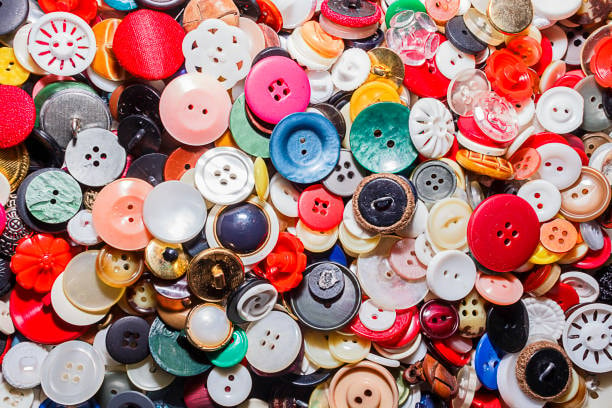
Buttons are small, often round objects that are used as fasteners, decorations, or both on clothing, accessories, and various other items. Traditionally made from materials like plastic, metal, wood, or shell, buttons are typically sewn onto fabric and passed through buttonholes to secure two pieces of material together. They come in various shapes, sizes, and styles, each serving different functional and aesthetic purposes. Beyond their practical use, buttons can also be significant design elements, adding character and detail to garments and accessories.
Types of buttons
These are the types of buttons for clothes:
Sew-Through Buttons or Flat buttons
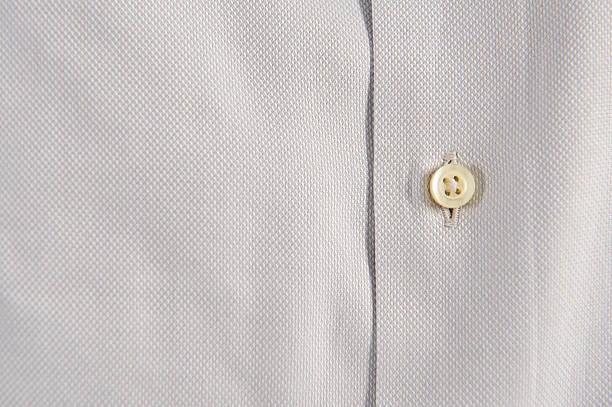
Sew-through buttons are the most common type, featuring two, three or more inches and four holes through which thread is passed to attach them to fabric. These buttons are versatile and can be found on a wide range of garments, from shirts and blouses to light jackets. Their simplicity makes them suitable for both functional and decorative purposes. By using different colors and types of thread, sew-through buttons can be customized to either blend seamlessly with the fabric or stand out as a design feature.
Shank Buttons

Shank buttons have a small loop, or a shank button, on the back instead of holes through the front. This design allows the button to be sewn onto the fabric without the thread being visible on the button’s surface, creating a clean and elegant appearance. Shank buttons are ideal for heavier fabrics and more formal attire, such as coats, suits, and dresses. They often have a more decorative front, which can range from simple designs to intricate patterns and embellishments.
Snap Buttons
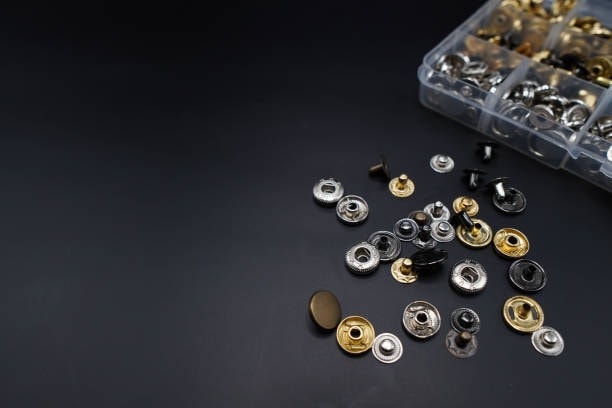
Snap buttons consist of two interlocking discs that snap together when pressed. These buttons are especially useful for garments that need to be fastened and unfastened quickly and easily, such as children’s clothing, sportswear, and certain types of accessories. Snap buttons come in a variety of materials, including metal and plastic, each offering different aesthetic and functional qualities. Metal snaps are typically used for a rugged look, while plastic button snaps add a playful or colorful touch.
Toggle Buttons
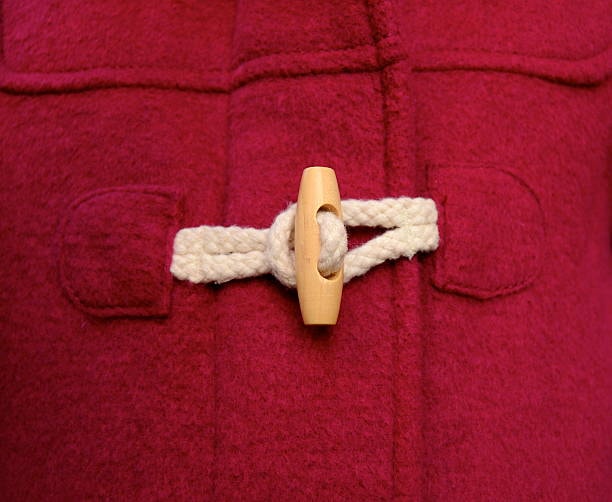
Toggle buttons are elongated, often cylindrical buttons that fasten through a loop rather than a traditional buttonhole. They are commonly used on duffle coats, knitwear, and some casual jackets. Toggles are usually made from materials like wood, horn, or plastic, providing a distinctive and sometimes rustic appearance. They are particularly popular in outerwear due to their ease of use and the strong closure they provide, making them both functional and stylish.
Stud Buttons
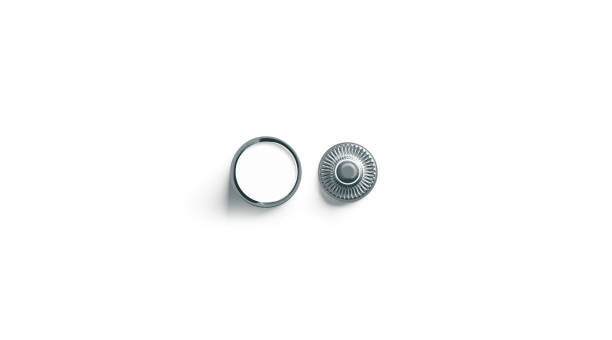
Stud buttons are typically made of metal and are attached by pressing them through fabric, often using a backing piece to secure them. These buttons are durable and commonly used on jeans buttons, leather jackets, and western-style shirts. Stud buttons add a bold, edgy element to garments, making them a popular choice for casual and rugged clothing. They can be purely functional or serve as decorative elements, often enhancing the garment’s overall aesthetic with their metallic shine.
Covered Buttons
Covered buttons are buttons that have been wrapped in fabric to match or complement the garment they are sewn onto. This type of button provides a seamless, polished look, making them ideal for elegant dresses, tailored suits, and upholstery. The fabric covering can be matched to the garment for a cohesive appearance or contrasted to create a unique accent. Covered buttons are a sophisticated choice, adding a touch of refinement to any piece.
Decorative Buttons
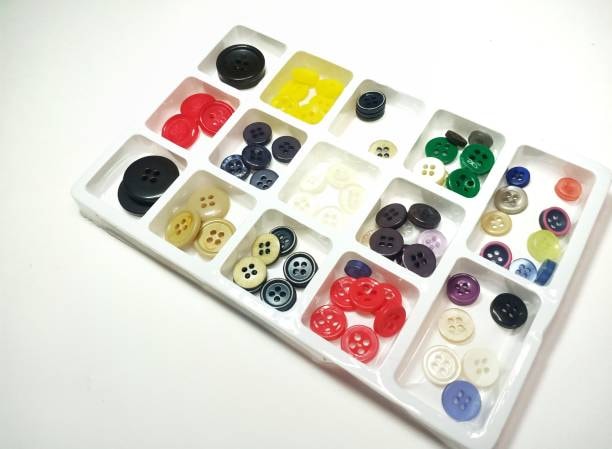
Decorative buttons are primarily used for their visual appeal rather than their functionality. They come in a vast array of shapes, sizes, and designs, from simple geometric shapes to intricate, ornate patterns. These types of buttons can be made from various materials, including plastic, metal, glass, and ceramic. Decorative buttons are often used on garments, accessories, and crafts to add personality and flair. They serve as focal points and can transform a simple item into something unique and eye-catching.
24 Different types of button materials and Finishes
These are the 24 different types of buttons materials and finishes:
1. Plastic Buttons for clothes
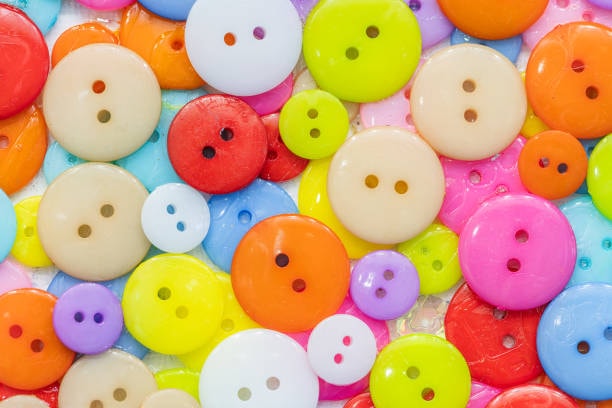
Plastic buttons are the most common and versatile type of button. They are lightweight, durable, and available in an endless variety of colors, shapes, and designs. Plastic buttons can mimic other materials like metal buttons or wood, making them suitable for a wide range of garments and accessories. Their affordability and ease of production make them a popular choice for both casual and formal wear.
2. Metal Buttons for clothes
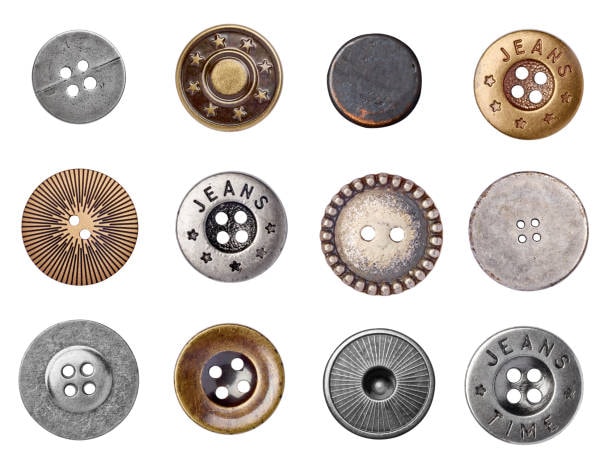
Metal buttons are known for their durability and classic appearance. They come in various finishes, including brass, silver, gold, and pewter, each providing a different look. Metal buttons are often used on outerwear, as denim jackets, and military-inspired garments due to their strength and decorative appeal. They can be engraved or embossed with intricate designs, adding an element of sophistication to any piece.
3. Wood Buttons for clothes
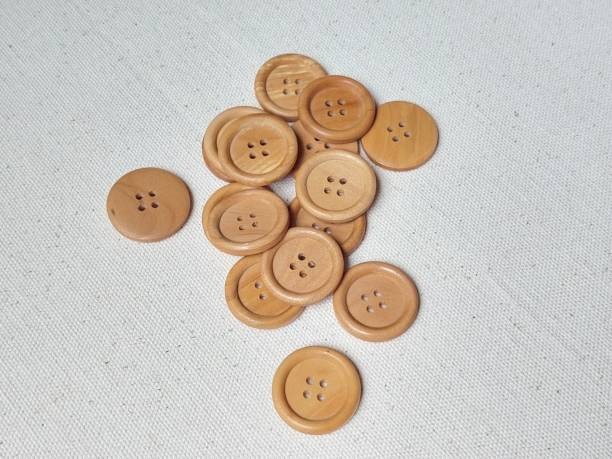
Wood buttons bring a natural, rustic charm to garments. They are often used on casual and handcrafted items like knitwear, outerwear, and bohemian-style clothing like flat and flat button- down shirts. Wood buttons can be smooth or textured, stained or painted, allowing for a variety of looks like novelty buttons. Their eco-friendly nature appeals to those seeking sustainable fashion options.
4. Shell Buttons for clothes
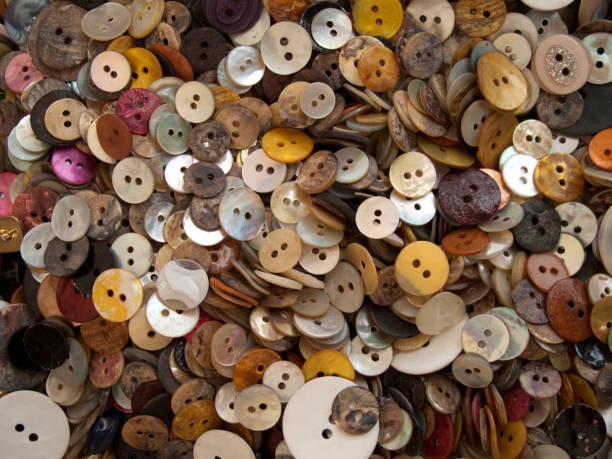
Shell buttons are made from natural shells, such as mother-of-pearl or abalone. These buttons have a unique iridescence and delicate appearance, making them ideal for lightweight and elegant fabrics. Shell buttons are often used on high-end shirts, blouses, and dresses, adding a touch of luxury and sophistication with their shimmering finish.
5. Fabric-Covered Buttons for clothes
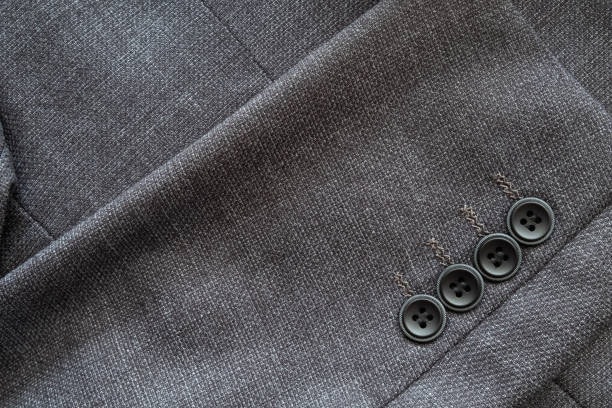
Fabric-covered buttons are made by wrapping fabric around a flat button core, allowing them to blend seamlessly with the garment. They are commonly used in tailored suits, elegant dresses, and upholstery. Fabric-covered buttons provide a cohesive look and can be matched to the garment’s fabric or contrasted for a unique design element.
6. Glass Buttons
Glass buttons are decorative and often used for their aesthetic appeal. They can be clear, colored, or intricately designed with patterns and motifs. Glass buttons are typically found on vintage clothing, formal wear, and decorative crafts. Their fragile nature means they are best suited for garments that do not require frequent washing or heavy use.
7. Ceramic Buttons
Ceramic buttons are handcrafted and often feature artistic designs. They are made from clay and glazed for a smooth finish. These buttons are ideal for adding a unique, artistic touch to garments, accessories, and arts and crafts projects. However, their delicate nature means they are best used on items that do not undergo heavy wear and tear.
8. Leather Buttons
Leather buttons add a rugged, natural look to garments. They are commonly used on outerwear, knitwear, and bags. Leather buttons can be dyed in various colors and often feature natural textures and patterns. Their durability and distinctive appearance make them a popular choice for casual and outdoor clothing.
9. Horn Buttons
Horn buttons are made from animal horns or hooves, providing a natural and organic look. They are often used on traditional and rustic clothing, such as knitwear, jackets, and coats. Horn buttons can be polished for a smooth finish or left with a more natural texture, adding a touch of authenticity to the garment.
10. Bone Buttons
Bone buttons are similar to horn buttons and are made from animal bones. They offer a durable and natural option for garments. Bone buttons are typically found on traditional and rustic clothing, such as outerwear and knitwear. Their unique texture and appearance add a distinctive touch to any piece.
11. Coconut Shell Buttons
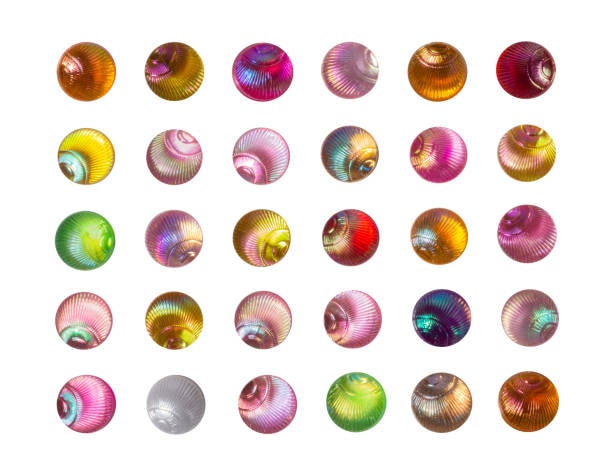
Coconut shell buttons are eco-friendly and offer a natural, tropical look. They are made from the shells of coconuts and are often used on casual and summer garments, such as beachwear and bohemian clothing. The natural texture and patterns of the coconut shell add a unique and earthy aesthetic to the buttons.
12. Bamboo Buttons
Bamboo buttons are another eco-friendly option, made from the fast-growing bamboo plant. They are lightweight, durable, and often feature natural textures and patterns. Bamboo buttons are ideal for casual and sustainable fashion, adding a touch of nature to the garment.
13. Corozo Buttons
Corozo buttons, also known as “vegetable ivory,” are made from the seeds of the tagua palm tree. They are a sustainable alternative to plastic beads and horn buttons. Corozo buttons are durable, can be dyed in various colors, and often feature intricate natural patterns. They are used in both casual and formal wear.
14. Mother-of-Pearl Buttons
Mother-of-pearl buttons are made from the inner layer of mollusk shells. They have a beautiful, iridescent finish and are often used on high-end shirts, blouses, and dresses. Mother-of-pearl buttons add a touch of luxury and elegance to any garment with their shimmering appearance.
15. Crystal Buttons
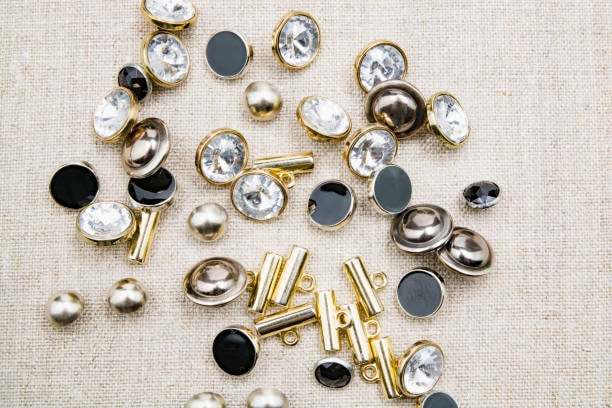
Crystal buttons are decorative and often used for their sparkling and luxurious appearance. They are typically made from cut glass or synthetic materials and can be found on evening wear, bridal gowns, and accessories. Crystal buttons add a touch of glamour and shine to any piece.
16. Pearl Buttons
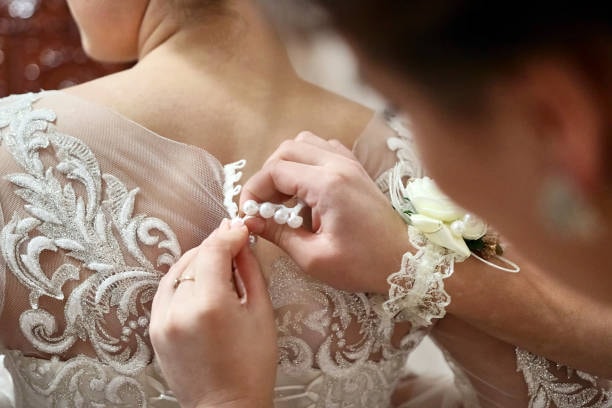
Pearl buttons are similar to mother-of-pearl buttons but are often smoother and more uniform in appearance. They are typically used on formal and bridal wear, adding a touch of sophistication and elegance. Pearl buttons provide a classic and timeless look to any garment.
17. Rhinestone Buttons
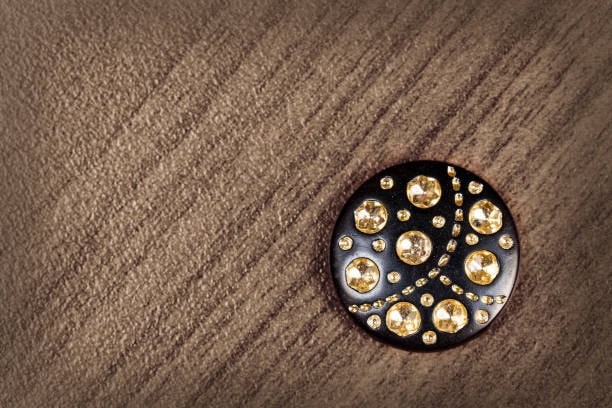
Rhinestone buttons are adorned with small, sparkling stones, giving them a glamorous and decorative appeal. They are often used on evening gowns, bridal wear, and accessories. Rhinestone buttons add a touch of sparkle and luxury to any piece, making them ideal for special occasions.
18. Brass Buttons
Brass buttons are durable and have a warm, golden appearance. They are often used on military uniforms, outerwear, and vintage clothing. Brass buttons can be polished for a shiny finish or aged for a more antique look, adding a touch of classic style to the garment.
19. Pewter Buttons
Pewter buttons have a soft, silver-gray finish and are often used on traditional and historical garments. They can be molded into intricate designs, making them popular for decorative purposes. Pewter buttons add a touch of vintage and historical charm to any piece.
20. Gold-Plated Buttons
Gold-plated buttons have a luxurious and shiny appearance, often used on high-end fashion, formal wear, and accessories. The gold plating provides a rich and elegant look, making these buttons a standout feature on any garment. They are perfect for adding a touch of opulence.
21. Silver-Plated Buttons
Silver-plated buttons offer a sleek and sophisticated appearance. They are commonly used on formal wear, uniforms, and high-end accessories. The silver metal plating and thin metal provides a polished and refined look, adding a touch of elegance and luxury to the garment.
22. Enamel Buttons
Enamel buttons are coat buttons that are made by coating a metal base with colored enamel, creating a smooth and glossy finish. They come in various colors and designs, making them ideal for adding a decorative touch to garments and accessories. Enamel buttons are often used on blouses, dresses, and jackets.
23. Rubber Buttons
Rubber buttons are flexible and waterproof, making them ideal for sportswear, outdoor clothing, and children’s wear. They are durable and can be molded into various shapes and colors. Rubber buttons provide a practical and functional fastening solution while adding a casual and modern look.
24. Acrylic Buttons
Acrylic buttons are lightweight and can be made in a wide range of colors and designs. They are often used as a cost-effective alternative to glass or crystal buttons. Acrylic buttons are suitable for both casual and formal wear, adding a touch of color and style to any garment.
Choosing the Right Button
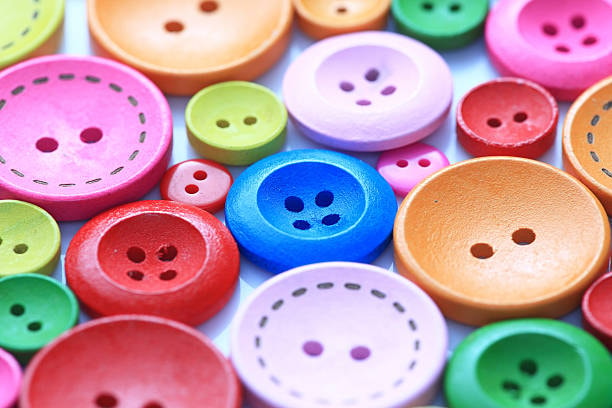
By choosing the right button materials types for your clothes:
A. Consider the Garment
Tip: Match the button style and material to the garment’s fabric and intended use. Lightweight fabrics pair well with small lay flat, delicate buttons, while heavier fabrics require sturdy, larger buttons.
B. Think About Functionality
Tip: For frequently used garments, such as coats and jeans buttons, choose durable buttons that can withstand regular wear and tear.
C. Aesthetic Appeal
Tip: Buttons can be a focal point or a subtle accent. Consider their placement and how they contribute to the overall design of the garment.
D. Practicality
Tip: Ensure the button size and placement allow for ease of use. Test the buttonholes and fasteners to ensure they function smoothly.
What Type Of Button Is The Most Popular?
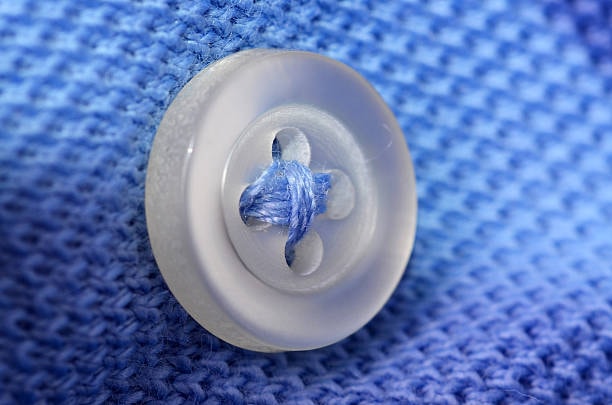
The most popular type of button is the plastic sew-through button. This type of button is incredibly versatile and widely used across various types of garments, from casual wear to formal attire. Plastic sew-through buttons feature either only two or four holes in the center, through which thread is passed to attach them to fabric.
The popularity of plastic sew-through buttons can be attributed to several factors:
- Versatility: They come in an endless variety of shapes, sizes, colors, and designs, making them suitable for almost any type of clothing. Whether it’s a shirt, blouse, dress, or jacket, there’s a plastic sew-through button that will fit perfectly.
- Affordability: Plastic buttons are generally inexpensive to produce, making them a cost-effective option for manufacturers and consumers alike.
- Durability: Despite their low cost, plastic buttons are quite durable and can withstand regular wear and tear, as well as repeated washing.
- Customization: These buttons can be easily customized to match the specific design requirements of a garment. They can be plain or embellished, matte or shiny, and can even mimic the look of other materials like wood or metal.
- Ease of Use: The simple design of sew-through buttons makes them easy to sew onto garments, whether by hand or machine, and they provide a secure fastening.
Due to these advantages, plastic sew-through buttons remain the go-to choice for a wide range of clothing items, making them the most popular type of button in the fashion industry.
Button Design Tips

This is the design tips for buttons:
A. Contrast for Visual Interest
Tip: Use contrasting buttons to add a pop of color and draw attention to specific areas of the garment.
B. Uniformity for Elegance
Tip: For a classic, elegant look, choose modern buttons, that blend seamlessly with the garment fabric.
C. Mix and Match
Tip: Mixing different button styles and sizes can create a unique, eclectic look. Just ensure they complement each other and the garment.
D. Placement Matters
Tip: Consider button placement strategically. For example, placing buttons closer together can create a more fitted appearance.
Frequently asked a questions
Frequently Asked Questions About Buttons
Buttons come in various types, including sew-through buttons, shank buttons, snap buttons, toggle buttons, stud buttons, covered buttons, and decorative buttons. Each type serves different functional and aesthetic purposes.
What materials are buttons made from?
Buttons can be made from a wide range of materials, including plastic, metal, wood, shell, glass, ceramic, leather, horn, bone, and coconut shells faux leather, shell, bamboo, corozo, mother-of-pearl, crystal, pearl, rhinestone, brass, pewter, gold-plated, silver-plated, enamel, rubber, and acrylic.
The most popular type of button is the plastic sew-through button, known for its versatility, affordability, durability, ease of use, and wide range of customization options.
Choosing the right button depends on several factors, including the type of garment, the weight of the fabric, the intended use of the garment, and your personal style preferences. For example, plastic buttons are great for everyday clothing, while metal or wooden buttons are better for outerwear and denim.
Yes, buttons can be used purely for decorative purposes. Decorative buttons come in a variety of shapes, sizes, and designs and can be made from materials like glass, crystal, and enamel to add a unique touch to garments and accessories.
Buttons can be sewn onto fabric using a needle and thread. Sew-through buttons have two holes in the center that allow the thread to pass through, while shank buttons have a loop on the back. Snap buttons and stud buttons may require special tools for attachment.
Yes, there are eco-friendly button options, such as those made from natural materials like wood, coconut shell, bamboo, corozo (vegetable ivory), and recycled materials. These wooden and leather buttons are sustainable alternatives to traditional plastic buttons.
Garments with delicate buttons, such as those made from glass, ceramic, or mother-of-pearl, should be handled with care. It’s best to hand wash these items or use a gentle cycle on the washing machine. Always check the care label for specific instructions.
Yes, you can replace buttons on your clothes. If a button falls off or gets damaged, you can sew on a new one. It’s a good idea to keep spare buttons that often come with new garments for this purpose.
Fabric-covered buttons are buttons that have been wrapped in fabric to match or complement the garment they are sewn onto. They provide a seamless and polished look and are often used in tailored suits, elegant dresses, and upholstery.
Yes, snap buttons and some stud buttons can be attached without a sewing button used. Snap buttons consist of two interlocking discs that snap together, without sewing buttons while stud buttons can be pressed through the fabric using a backing piece.
Yes, buttons can be customized in various ways, including color, button material used, shape, size decorative function, and design. Customization options allow you to create buttons that match your specific design needs and preferences.
Shank buttons are used for garments where a clean and elegant appearance is desired, as the sewing thread is not visible on the button’s surface. They are ideal for heavier fabrics and more formal attire, such as coats, suits, and dresses.
Yes, buttons made from luxurious materials like crystal, pearl, rhinestone, and mother-of-pearl are often used for special occasions. These buttons add a touch of elegance and glamour to evening wear, bridal gowns, and other formal attire.
You can add a unique touch to your garments by choosing decorative buttons that stand out, such as those with intricate designs, vibrant colors, or unusual materials. Experimenting with different types of buttons can transform a simple garment into something unique and eye-catching.
Conclusion
Buttons are a versatile and essential element in fashion design, offering both functional and aesthetic benefits. By understanding the different types of buttons, their uses, and design tips, you can elevate your sewing projects and create garments that are not only practical but also visually stunning. Whether you’re aiming for a classic, elegant look or a bold, contemporary style, the right buttons can make all the difference. Happy sewing!


